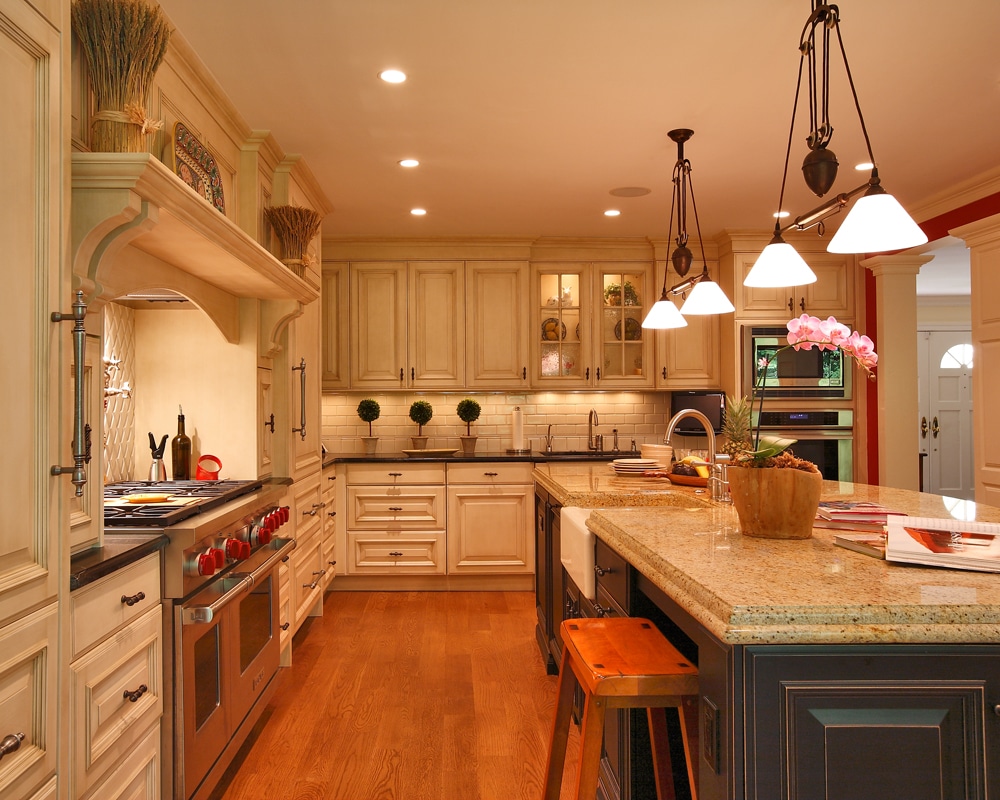Revisiting Traditional Family Dishes with Vintage Cooking Pots
In a time ruled by expeditious, disposable kitchen tools and the appeal of high-tech gadgets, classic cookware is experiencing a noteworthy comeback in our kitchens. The charm and functionality of traditional utensils like cast-iron skillets, Dutch ovens with enamel, and pots made of copper are capturing the hearts of home cooks and food lovers alike. These treasured pieces not only evoke sentimentality but also enhance the cooking experience, allowing us to reconnect with family recipes and traditions that have been handed down through the years.
Classic cookware stands out for its resilience and efficiency, qualities that modern materials often struggle to match. It’s no wonder chefs and home cooks continue to rely on these timeless tools, as they provide outstanding temperature management and flavor enhancement. Whether you are preparing a wholesome stew or a delicate soufflé, the best classic cookware can enhance your culinary creations. Join us as we investigate the enduring appeal of these kitchen essentials and share tips on how to pick, nurture, and employ classic cookware for both daily cooking and special occasions.

The Classic Appeal of Traditional Cookware
Classic cookware has an enduring charm that appeals with both cooks and seasoned chefs. The materials and craftsmanship involved in making these pieces contribute significantly to their appeal. From the sturdy construction of cast iron skillets to the elegant shine of copper pots, traditional cookware merges function with aesthetic beauty. These timeless tools not only serve as dependable cooking implements but also evoke sentimentality, transporting cooks to kitchens filled with the aromas of family recipes passed down through generations.
Additionally, the factor of classic cookware that enhances its allure is its versatility. Many traditional pieces are designed to function effectively across a variety of cooking methods, whether on the stovetop, in the oven, or even over an open flame. This adaptability allows home chefs to experiment with different culinary techniques while enjoying unmatched heat retention and distribution. Such qualities make traditional cookware ideal for everything from slow-cooked stews to perfectly seared meats, ensuring that flavor and quality are never compromised.
Moreover, traditional cookware represents a eco-friendly choice in today’s world of disposable and single-use kitchen items. With proper care, these durable pieces can last lifetimes, reducing waste and encouraging a more thoughtful approach to cooking and meal preparation. As more people seek to embrace sustainability, investing in heirloom-quality cookware becomes more than a practical decision but also a statement of values. Have a peek at this website of traditional cookware lies in its ability to combine history with modern needs, making it a perpetual addition to any kitchen.
Essential Traditional Cookware Items
Every culinary artist, regardless of whether a newcomer or veteran pro, should have a range of traditional cookware that can survive the trial of time. A cast iron skillet is often regarded as the keystone of any kitchen, renowned for its heat retention and consistent cooking. Its versatility allows it to seamlessly transition from stovetop to oven, making it perfect for everything from frying eggs to preparing cornbread. The capacity to season it over time adds layers of savory notes, enhancing your dishes with a depth that modern nonstick options just cannot match.
An additional must-have is the enameled Dutch oven, which combines functionality with aesthetic. Perfect for slow cooking, braising, and making stews, its solid design ensures consistent temperature control. https://postheaven.net/agendacollar51/the-timeless-cooking-utensils-for-every-cooking-lover in vibrant colors, a Dutch oven can go from the kitchen to the dining table, functioning as a stunning centerpiece for family meals. Spending on a top-notch Dutch oven means you will have a dependable partner for nutritious meals for years to come.
Lastly, a versatile stainless steel saucepan is necessary for tasks that include boiling pasta to making sauces. Known for its strength and ability to withstand to corrosion, stainless steel cookware allows for accurate cooking and is easy to clean. Its power to distribute heat consistently makes it a top pick among professional chefs as well. Together, these fundamental pieces form a cornerstone of classic cookware that can improve any gastronomic pursuit, fostering a connection to the traditions and flavors of family recipes.
Looking After & Reviving Heritage Cooking Utensils
Heirloom cooking utensils frequently brings with it stories and recollections, making it a valued part of multiple kitchens. In order to ensure these treasured items stay functional, appropriate attention is crucial. Start by cleaning them carefully avoiding strong soaps that may remove their coating or layer. For cast iron, utilize a stiff brush and boiling water; refrain from soap except necessary. Once cleaning, dry thoroughly and apply a light coat of oil to stop rust & maintain the seasoning.
Restoring heirloom cookware can also require a bit of further care, notably for items that have experienced considerable wear over the years. Concerning iron cookware, you can restore the coating by cleaning the pan & then coating it with vegetable oil before placing it turned over in the oven at elevated heat. This process will aid reinstate the stick-resistant surface. In the case of copper or aluminum utensils, a light polishing with a specific cleaner can restore their initial shine and aesthetics.
It's also worth noting that the narrative behind your heritage cookware can be as significant as its functional abilities. As you use these items, remember maintaining their character and any unique features, such as marks. This respect for artistry can improve your cooking adventure & allow you to create new memories while honoring the traditional.